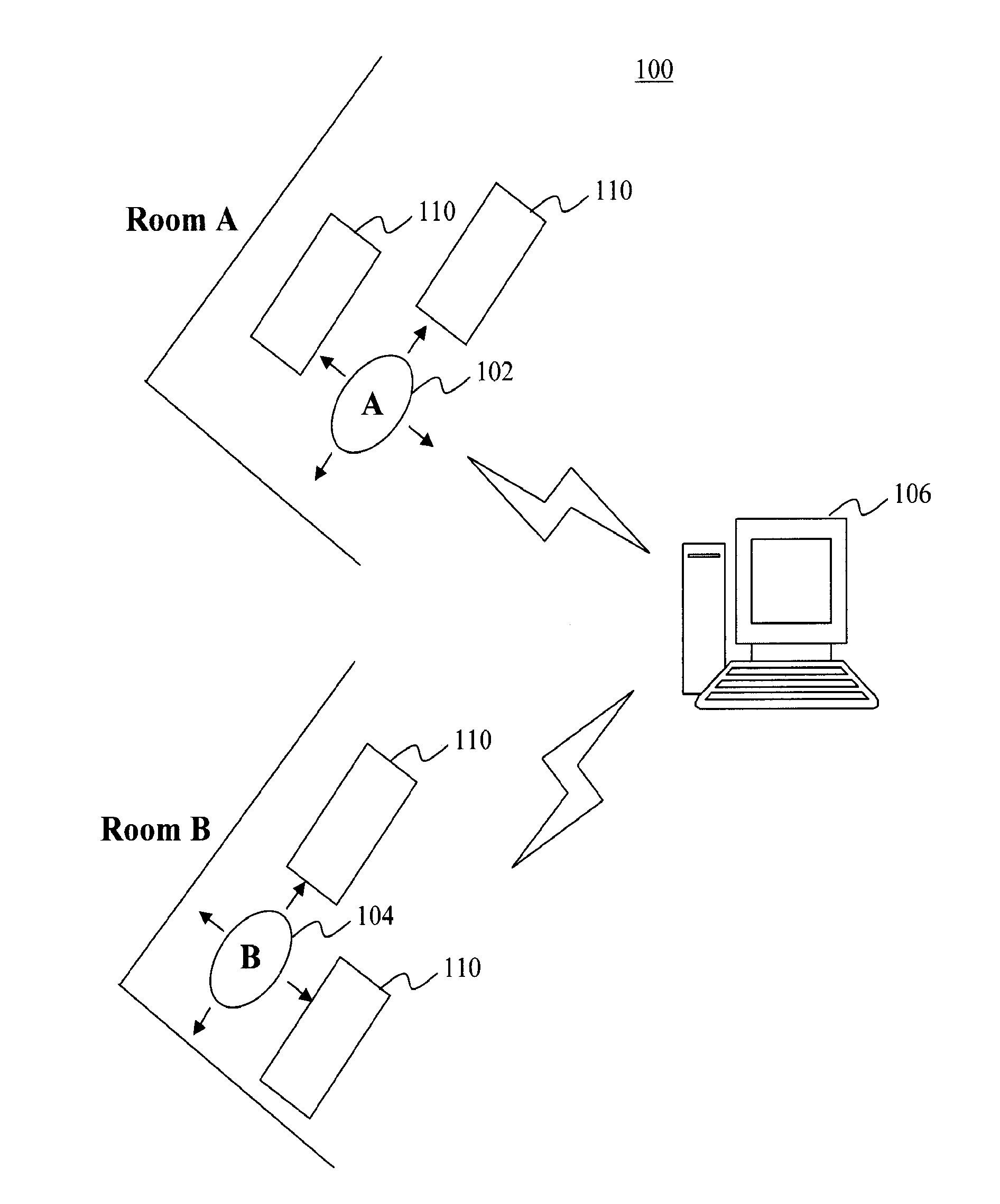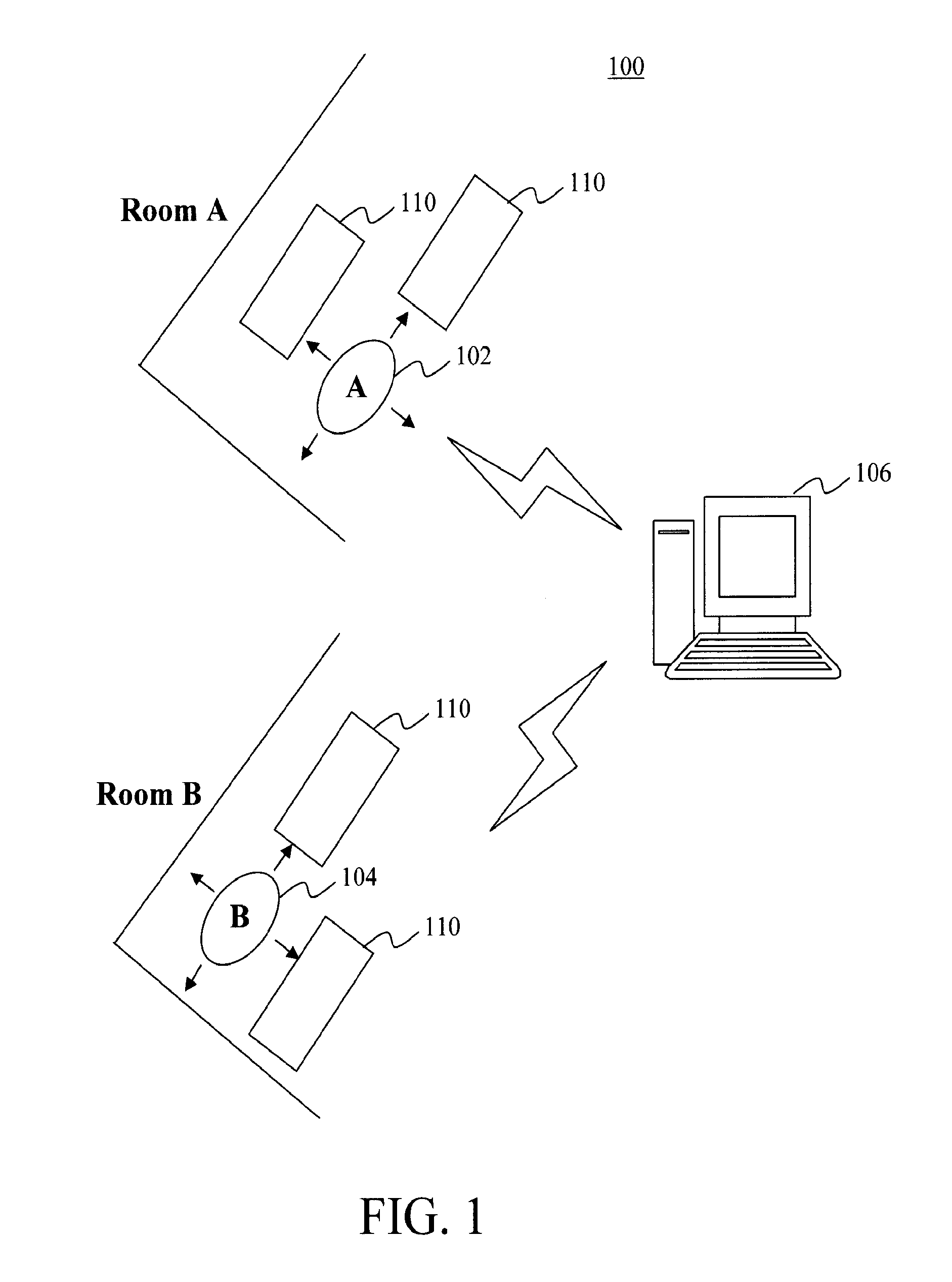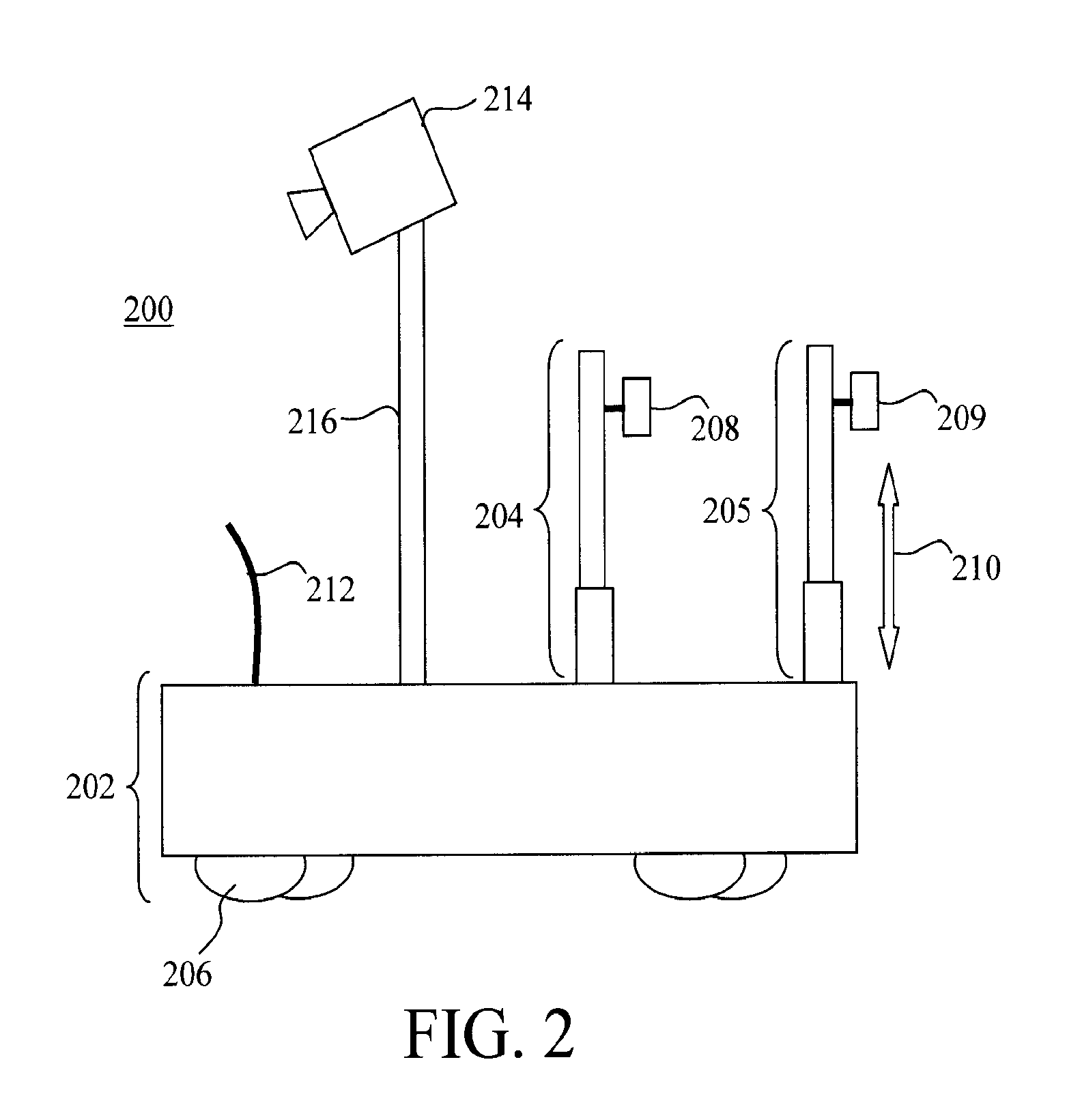Detecting Energy and Environmental Leaks In Indoor Environments Using a Mobile Robot
a mobile robot and indoor environment technology, applied in the direction of electric programme control, instruments, program control, etc., can solve the problems of inability to place a static sensor in mid-air, the use of static sensors is, however, necessarily rather sparse in spatial resolution, and the building typically loses energy
- Summary
- Abstract
- Description
- Claims
- Application Information
AI Technical Summary
Benefits of technology
Problems solved by technology
Method used
Image
Examples
Embodiment Construction
[0020]Provided herein are techniques for detecting sources of heating and air conditioning, i.e., “energy” leaks and inefficiencies, and for detecting airborne matter leaks in indoor environments, such as in buildings. For example, FIG. 1 is a diagram illustrating exemplary system 100 for detecting energy and / or environmental leaks in a building. The term “energy leak,” as used herein refers to an unintended change in the temperature of the indoor air as a result of flow either from the indoor environment out, or from the outdoor environment in. The term “environmental leak,” as used herein refers to the flux (influx or outflux) of airborne matter constituents in a building. By way of example only, the airborne matter may include airborne particulate (solid) matter, airborne gaseous matter and / or airborne liquid matter (e.g., humidity). The airborne matter constituents may be undesirable (for example in the case of an influx of radon gas) or desirable and intentionally produced (suc...
PUM
 Login to View More
Login to View More Abstract
Description
Claims
Application Information
 Login to View More
Login to View More - R&D
- Intellectual Property
- Life Sciences
- Materials
- Tech Scout
- Unparalleled Data Quality
- Higher Quality Content
- 60% Fewer Hallucinations
Browse by: Latest US Patents, China's latest patents, Technical Efficacy Thesaurus, Application Domain, Technology Topic, Popular Technical Reports.
© 2025 PatSnap. All rights reserved.Legal|Privacy policy|Modern Slavery Act Transparency Statement|Sitemap|About US| Contact US: help@patsnap.com



